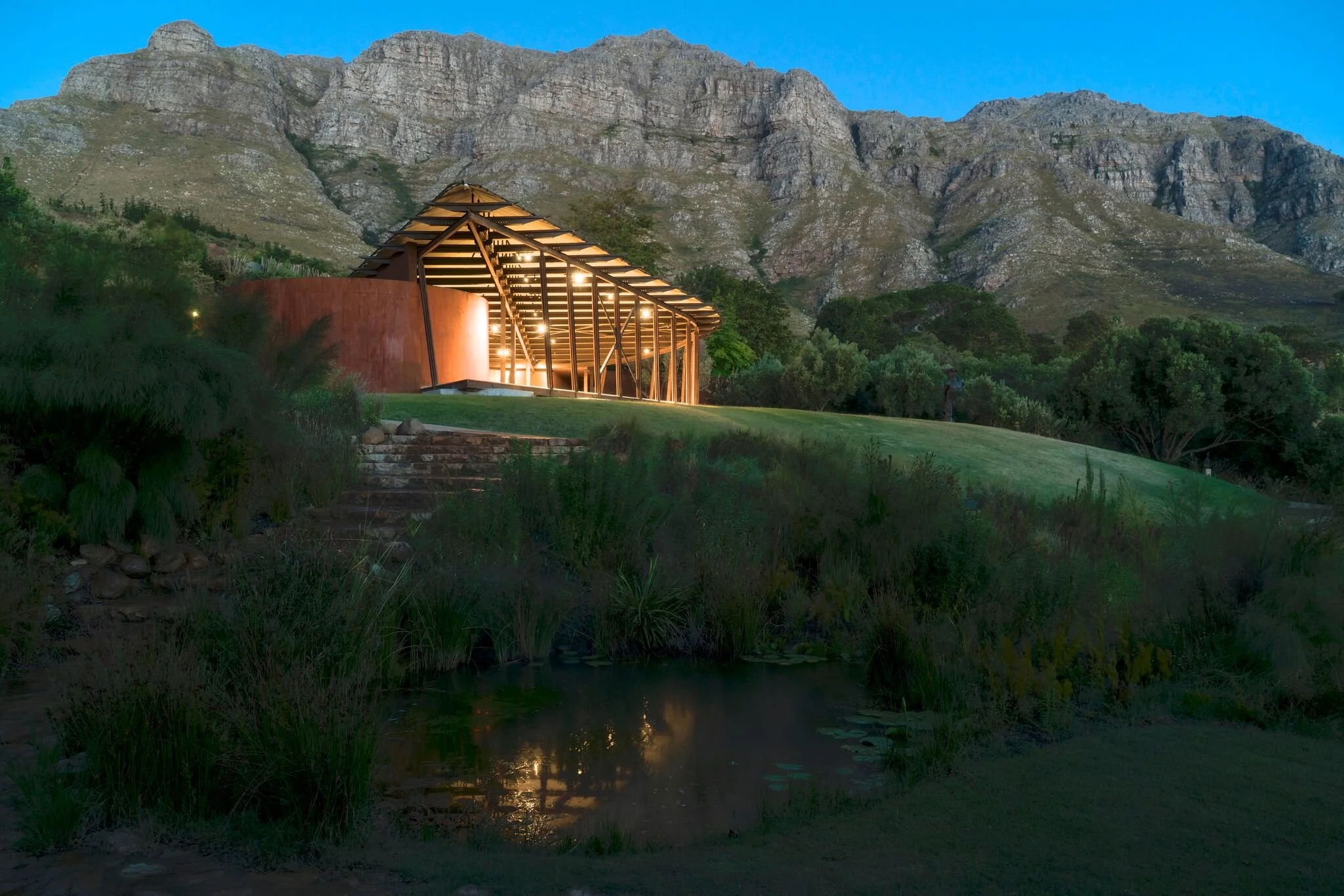Garden Day in The Dylan Lewis Sculpture Garden
Garden day 17 October 2021 at the Dylan Lewis Sculpture Garden
Exclusive Sunday access 8.30 – 14:00
By appointment only
Guests are welcome to meander the garden in their own time, or join a guided tour at 10:00. Complimentary wild olive flower crown. Barista coffees, teas and homemade cakes at the Old Storeroom will be available for purchase.
Entry fee:
R180 pp
R120 pensioner and students
Under 18’s complimentary
To make a booking or for more information, contact:
0218800054
ABOUT Dylan Lewis
The artist’s garden
A Dark Eden: Paradise lost and found
Symbolic of so many things, and acting as a microcosm of the universe, creation and life, the garden is a self-contained universe. When imbued with an artist’s creative vision, it takes on still further layers of meaning. A metaphor for evolution and the human experience – and all the complexities, struggles and triumphs therein - the Dylan Lewis Sculpture Garden contains within it levels of symbolism and serves as a stage where nature and man, wild and tame, meet.
Organic in the truest sense of the word, in that the garden’s creation wasn’t calculated, it has over time also become the most fitting context in which to experience, and understand Lewis’ body of work. ‘It was an unplanned project,’ he notes. Not unlike the process of creating an artwork, it emerged unexpectedly, a result of the process of making. Indeed this moulding of not only sculpture but also of the landscape itself has resulted in a rare ‘artist’s garden’, an entire realm reflecting a world view.
The artist in essence sculpted a flat canvas of land – with every metre of the seven hectare expanse shaped, articulated and moulded, and two excavator operators essentially serving as a de facto extension of Lewis’ own hands during the process. The artist had never sculpted on this scale before but found that the principles of the practice remained largely the same. ‘I felt like I was walking through a large surface of one of my sculptures,’ he notes. Applying the same techniques he would have done for a smaller work, he worked with the sightlines of the surrounding mountains – the garden forming part of a much larger composition that includes the landscape.
While initially sculptures were placed, replaced or moved until they settled into the garden, they have now become intertwined with the space, creating a dialogue – the landscaping informed the placement of particular sculptures, while the nature of Lewis’ sculpture practice informed the forms excavated and moulded into the earth itself. Unusual in the context of sculpture ‘parks’ or gardens, Lewis’ creation is a consciously composed work in itself, a philosophical framework, rather than merely a platform upon which to display his pieces. And while the hardscaping – pathways, hills, buildings - is now complete, the garden continuously evolves through seasons, the natural order of time changing the vegetation and the dynamic between nature and sculpture.
It became evident to Lewis as he embarked on making the garden that he was attempting to express more than just the physical and found himself exploring a theme that runs consistently through his work - the counterpoint between tameness and wildness, where the mountain amphitheatre represents the untamed and the garden is an ordered manmade entity. ‘Exploring this tension allowed me to place the sculptures in the context within which they were created – as forms of nature,’ he observes.
In addition to these ideas of wildness and containment, there exist other contrasts. The garden is a space in which to explore the conceptual realm – to delve into the idea of this tension not just on the physical plane, but on an emotional one. In this way it embodies the dichotomies and contrasts of life and the complexities of the human psyche.
Within the world that is the garden - the sculptures themselves, and the interplay between the two – there exists a dialogue. With the sculptures expressing human emotion and complexity – a consistent theme that’s run through the Lewis’ work throughout his career – light and dark, calm and conflict. He’s quick to point out however that this darkness is not in a moral sense, but rather a reflection of the difficulties embedded in the human experience and even nature itself. Lewis no longer sees dark and light in black and white or as moral opposites, but rather an impartial reality of existence. Explored in the shades of grey. ‘The human experience of a garden is often one of serenity and beauty – but what’s happening on another level, beneath the surface and invisible to the naked eye is also a reality, and just part of life. Nature is beauty, but it’s also death, decay, destruction,’ he adds.
The garden is an impersonal expression of this contrast, and its ubiquity. In some ways, a tour of the garden gives insight into Lewis’ own mental world – offering a glimpse of the artist’s personal philosophical framework. ‘In taking people around the garden I talk to ideas which inform my own journey - emotionally and philosophically. So it’s an immersive experience in that sense,’ he says, and his sculptures express this constant dance through their symbolism – animalistic versus human, serenity and struggle. ‘All of nature has this dichotomy - even a suburban garden.’
Visits to the Dylan Lewis Studio and Sculpture Garden are by appointment only. To make a booking request, please visit the website, call +27 (0)21 880 0054 or email reservations@dylanart.co.za




















